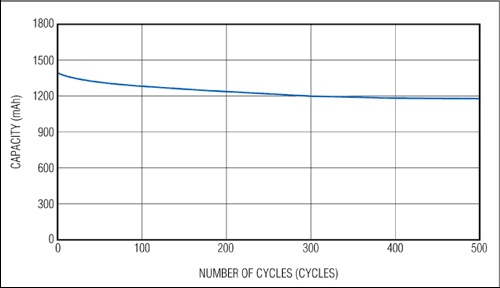How a battery pack becomes qualified as “smart” is, quite simply, because of software. The Smart Battery System (SBS) forum defines a smart battery as a battery pack where some level of communication occurs between the battery, the equipment, and the user. As a further technicality, their definition also requires that a smart battery must provide state-of-charge indications (i.e. fuel gauge).
The majority of this post is focused on lithium chemistry battery packs but much of it can be applied to NiMH as well. In our world of custom high reliability industrial, medical, military, and aerospace battery packs, a smart battery includes all of the following parameters.
Circuit Protection or Safety Circuit
Every lithium battery pack must have protection from an inadvertent internal or external short circuit. These circuits monitor voltage and current and will shut down the battery operation in the event of a potentially dangerous condition. One of the most common ways to manage this function is by using a pair of MOSFET switches in series, where each MOSFET has an internal diode across the output.
Charging/Discharging Management
Each cell must be monitored and upon the circuitry sensing an overcharge condition, the current is immediately interrupted using a switch, relay, or contactor as the voltage of each cell in a battery pack is essential to its overall health. If an application is using a battery with lithium chemistry, the operating voltage ranges between 2.5 and 4.2 V. That is the window where charging/discharging must occur to ensure safe operation and long battery life.
Fuel Gauging
Fuel gauging allows the user to remain constantly aware of the state of charge (SOC) of the battery so that they can plan their usage accordingly. What many people don’t understand is that batteries will lose capacity as they are being charged and discharged. As the graph shows below, a 100% charge reading on the fuel gauge will be 1400mAh during the first cycle and 1200mAh after the 300th.

Battery Charge Reading on Fuel Gauge
Today’s high tech integrated circuits from companies like TI, Linear Tech, and Seiko can determine with a high degree of accuracy the SOC for all types of custom battery pack applications despite their low supply current (about 60µA in active mode and 1µA in sleep mode).
Cell Balancing
The battery management system (BMS) will monitor the voltage in each cell, and when it detects an imbalance, will attempt to rebalance either during the charge or discharge of the battery depending upon the application.
The BMS includes a data warehouse that records battery history including cycle count, usage pattern, maintenance requirements, cell temperature, energy throughput, etc. Typically, the BMS will store histograms (in non-volatile EEPROM) to record the battery history data that can be accessed later to troubleshoot problems and identify root cause.
Summary
For each of the above key parameters of a smart battery, it is the software and algorithms that manage the performance to make the battery pack smart. To get the most run time out of a custom battery pack, the engineering team spends a significant amount of time designing and testing different ways to save power during battery operation to minimize the current drain wherever possible.
Sometimes this is referred to as demand management, but it is one of the most critical ways to maximize the run time and life span of a custom battery pack. For example, a common practice in demand management is a feedback loop between the battery and the custom charger which provides automatic compensation to keep the battery within its desired operating parameters at that specific moment. This is important because every time a battery is re-engaged with the charger, the feedback loop can give different information on everything from state of charge or the pack, the capacity of each cell in the pack, to the temperature that the pack is currently at, just to name a few. Each one of those parameters and many others, will determine inside the software how the pack will be recharged at that moment.
Understanding the best ways to manage the operation or all the different software, firmware, drivers, and hardware is what differentiates the best battery products apart from their peers. Small things like turning functionality on and off when not in use can improve your user experience as the battery will hold a charge longer and will have a much longer life. With technologies changing so rapidly, keeping ahead of the curve in smart battery technology is a full-time job.
Key Takeaways
- Software Defines a Smart Battery: A battery pack is considered “smart” when it incorporates communication between the battery, device, and user, providing key data like state-of-charge through embedded software and algorithms.
- Protection Circuits Ensure Safety: Smart lithium battery packs include circuit protection using MOSFET switches to prevent damage from overcurrent, short circuits, or unsafe voltage conditions.
- BMS Handles Charging, Discharging, and Cell Balancing: The Battery Management System (BMS) monitors individual cell voltages, controls charging/discharging, balances cells, and records performance data for diagnostics.
- Fuel Gauging Tracks Battery Health Over Time: Integrated circuits accurately measure and display the state-of-charge, helping users plan operation while accounting for capacity loss over repeated cycles.
- Demand Management Extends Battery Life: Smart batteries use software-controlled feedback loops between the pack and charger to optimize recharging, minimize power drain, and maximize both runtime and lifespan.
















